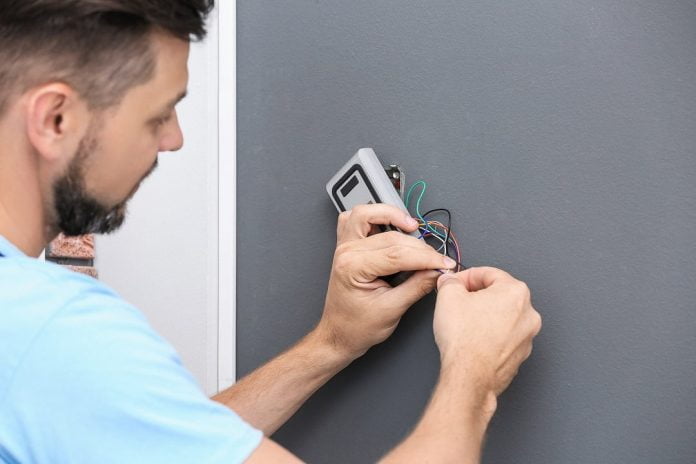Leading teacher of security technology & locksmithing at Melbourne Polytechnic, Aaron Smith, writes that home and workplace security have become paramount in recent months and he argues the locksmighting (and security industries) will move to help manage the effects of COVID-19.
With workplaces becoming unoccupied and more of the community staying at home, being able to protect assets remotely and implementing ways to minimise the spread of germs will soon become part of our new normal. Security systems will become a necessity for businesses and homes, when previously they may have been considered a nice to have.
The locksmith industry has had a rough start to the year, with many workplaces forced to reduce operating hours, staff and, in some cases, close their showrooms. Ways of working had to adapt to ensure the safety of both employees and customers as working from home measures were implemented.
As time went by, though, the operational effects of the pandemic saw suppliers reporting a positive increase in sanitation and technology products. This was the result of an increase in the community contacting locksmithing as attitudes towards security and hygiene rose during lockdown.
It was interesting to witness a large demand for electronic access control and video monitoring via CCTV, as the public suddenly became more aware of these types of technologies. Locks and camera systems were becoming increasingly connected to the internet, especially with more people at home. People wanted to see when their parcels were being delivered, for example, and workplaces were looking to secure their sites and protect their assets while staff worked remotely.
As this happened, it became clear to myself, and the members at Master Locksmiths Association of Australasia (MLAA), that the locksmithing industry was not at long-term risk. In fact, the demand for contactless security is expected to grow exponentially.
What’s more, with hygiene at the forefront of minds, there has been an understandable uptake in thermal imaging and contactless locks. Thermal cameras can detect when someone is in a location, measure their temperature and, in some cases, lock them out if it’s too high. Contactless locks also support minimising the spread of germs through handles and pin pads. This type of new technology is where we see the locksmithing industry heading thriving in a COVID-normal society.
As an essential service during lockdown, we were still able to operate with social distancing precautions to continue to deliver safety to the community. Melbourne Polytechnic acknowledges the support of the Victorian Government from the Regional Specialist Training Fund. This was an investment into our future which allowed us to continue to support our students.
As remote learning began earlier this year, our students were quick to adapt to the new model. The Certificate III in Locksmithing sent students activity packs with the tools they would normally use, before they completed the work alongside their classmates online. We also incorporated 360-degree virtual tours of people’s houses with Google Tours, to help teach students about security systems. It was an interesting and challenging time for such a hands-on course, but the results are testament to how we adapted.
Melbourne Polytechnic is one of 4 TAFEs in Australia that offers this course and our apprenticeship programs play a major role in this. We endeavour for our students to practice real world scenarios using the machines, software and techniques used by locksmiths including aspects of cyber security and IT.
Moving forward, I see our industry expanding to cater to the effects of COVID-19. The need for remote viewing, securing workplaces and hygiene technology shows no sign of slowing down. As this evolves, and working from home continues to some degree, home and business owners will ultimately need to be able to monitor multiple locations. The future of locksmithing not only looks bright, but very promising.
#securityelectronicsandnetworks.com












